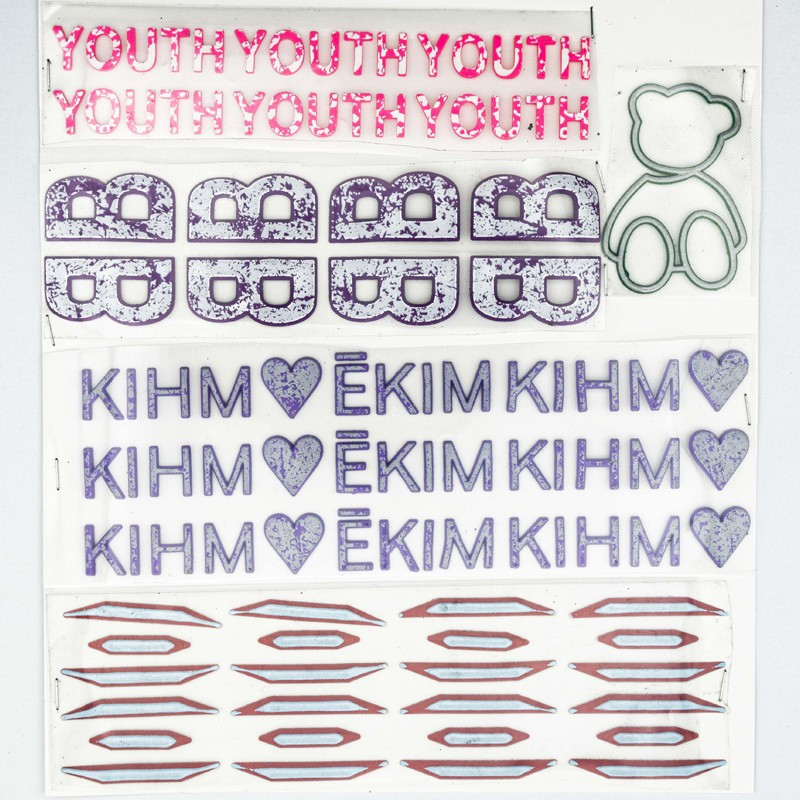## Differences Between Silicone and TPU Clothing Labels
In the fashion industry, branding is crucial, and clothing labels play a significant role in conveying brand identity. Two popular materials used for clothing labels are **silicone** and **thermoplastic polyurethane (TPU)**. Both materials offer unique advantages and characteristics, making them suitable for different applications. This article explores the key differences between silicone and TPU clothing labels, focusing on their properties, manufacturing processes, environmental impact, and overall suitability for various types of garments.
### Overview of Silicone and TPU
**Silicone** is a synthetic polymer made from silicon, oxygen, carbon, and hydrogen. It is known for its flexibility, durability, and resistance to extreme temperatures. Silicone can be found in various forms, including gels, rubbers, and liquids. Its non-toxic nature makes it safe for use in products that come into contact with skin.
**TPU**, on the other hand, is a type of thermoplastic elastomer that combines the properties of rubber with the processability of plastics. TPU is characterized by its high elasticity, abrasion resistance, and versatility in application. It is often used in products that require durability and flexibility.
### Key Differences Between Silicone and TPU Labels

#### 1. **Manufacturing Process**
The manufacturing processes for silicone and TPU labels differ significantly:
– **Silicone Labels**: These are typically produced using CMYK printing technology. The silicone material can be molded into various shapes and sizes before printing. The process allows for vibrant colors and intricate designs to be printed directly onto the label surface.
– **TPU Labels**: TPU labels are usually made using screen printing or high-frequency welding techniques. This method allows for a more durable bond between the label and the garment, ensuring longevity even after multiple washes. TPU can also be produced in a variety of thicknesses ranging from 1.0 to 2.5 mm.
#### 2. **Physical Properties**
The physical properties of silicone and TPU labels affect their performance in different environments:
– **Silicone Properties**:
– Excellent heat resistance
– Good flexibility
– Non-reactive with most chemicals
– Generally translucent or opaque
– **TPU Properties**:
– High elasticity and flexibility
– Moderate heat resistance
– Excellent abrasion resistance
– Can be transparent or opaque
These differences mean that while silicone labels may perform better in high-temperature environments (such as cooking or baking), TPU labels excel in applications requiring durability against wear and tear.
#### 3. **Durability and Longevity**
Durability is a critical factor when choosing clothing labels:
– **Silicone Labels**: While silicone offers good durability, it may not withstand repeated exposure to harsh conditions as well as TPU. Silicone can degrade over time when exposed to UV light or extreme temperatures.
– **TPU Labels**: Known for their toughness, TPU labels resist fading, cracking, peeling, and tearing. They maintain their appearance even after frequent washing and wearing, making them ideal for activewear or swimwear.
#### 4. **Comfort and Feel**
The tactile experience of wearing clothing with different labels can influence consumer preference:
– **Silicone Labels**: These tend to have a soft feel but may not provide the same level of comfort against the skin as TPU due to their thickness.
– **TPU Labels**: Typically thinner than silicone labels, TPU provides a soft-to-touch experience that is comfortable against the skin. This quality makes them suitable for garments worn closely to the body.
#### 5. **Environmental Impact**
As sustainability becomes increasingly important in fashion:
– **Silicone**: The production of silicone can involve significant energy consumption and chemical processes that may not be environmentally friendly.
– **TPU**: Many manufacturers are now producing TPU labels from recycled materials, making them a more sustainable option compared to traditional silicone products. Additionally, TPU labels can often be recycled at the end of their life cycle.
### Applications of Silicone vs. TPU Labels
Both silicone and TPU labels find applications across various segments of the fashion industry:
– **Silicone Labels**: Commonly used in kitchenware products (like oven mitts), baby items (such as pacifiers), and some fashion accessories where heat resistance is crucial.
– **TPU Labels**: Preferred for activewear, swimwear, leggings, thermals, lingerie, and other garments that require durability and comfort during movement.
### Conclusion
In summary, both silicone and TPU offer distinct advantages as clothing label materials. When choosing between the two, brands must consider factors such as manufacturing processes, physical properties, durability, comfort levels, environmental impact, and specific application needs.
For brands aiming for high durability with a modern aesthetic in their clothing lines—especially those focused on active or swimwear—TPU labels stand out as an excellent choice due to their resilience against wear and tear while providing comfort against the skin. Conversely, silicone may be more appropriate for products requiring heat resistance or specific tactile qualities.
Ultimately, understanding these differences allows brands to make informed decisions that align with their identity while meeting consumer expectations for quality and sustainability.
—
### Summary
This article explores the differences between silicone and TPU clothing labels regarding manufacturing processes, physical properties, durability, comfort levels, environmental impact, and applications in fashion. It highlights how each material serves unique purposes within the industry while emphasizing the growing preference for sustainable options like TPU labels among modern brands looking to enhance their product offerings.
Citations:
[1] https://www.trimco-group.com/newsroom/the-power-of-tpu-labels
[2] https://www.colorpglobal.com/news/custom-printed-tpu-labels/
[3] https://zcy-gov-open-doc.oss-cn-north-2-gov-1.aliyuncs.com/1024FPA/450303/1000622767/20239/b8e541b0-b7eb-4555-bae1-bdbe1798aa66.pdf
[4] https://www.jiameilabels.com/news-differences-between-silicone-heat-transfer-labels-and-tpu-patches.html
[5] https://www.clothinglabels.cn/tpu-labels-characteristics/
[6] https://huggingface.co/camenduru/anytext/commit/9712932572600a5947976405ad84b84184a6a5ce.diff?file=nlp_csanmt_translation_zh2en%2Fsrc_vocab.txt
[7] https://www.atpchem.com/what-is-tpu-material-vs-silicone-understanding-the-differences.html
[8] https://soabar.co.uk/fashion-apparel-labels/tpu-labels/


